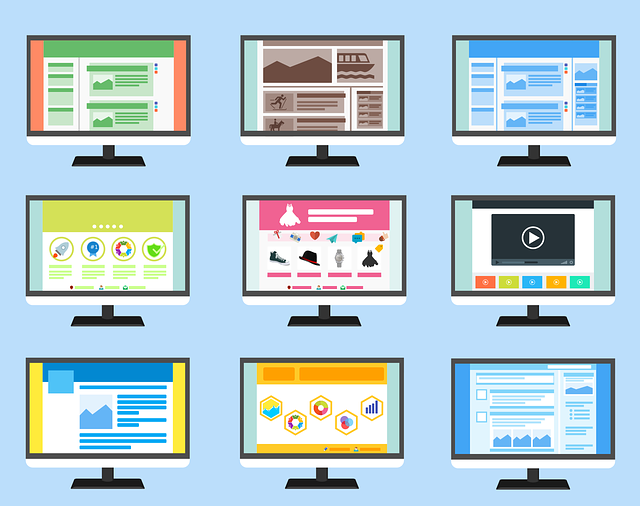This infographic guide is meant for designers, developers, and marketers alike. Infographics are trending now more than ever. There is an increasing demand for visual content on the web. The increase is more than 9,900% since 2007.
Digital content creators use infographics in writing blogs or inject them into their website content or social media posts.
Infographics are successful because there has been an excellent demand for visualized content. Looking at the growth of newspaper visual content, there was a 142% rise between 1985 and 1994. But compared to the need for pictures and video clips on the Internet, that seems nothing to worry about. Visualized information exploded on the Internet by a staggering 9,900% since 2007.
If you are thinking of more ways to boost your website traffic organically, try using infographics in your digital marketing strategy today.
Why is Infographic In Demand?
Infographics are any visualized data that is easier to understand than text content. Different variations include imagery such as charts and diagrams, illustrations, and until recently, even the use of videos. An infographic needs to be eye-catching in both design and content to grab and hold the audience’s attention.
People are highly visual. People are more visually-oriented. We can not help but be attracted to imagery, so it’s natural that audiences want more of things like that. Willingness among readers to consume content rises by 80% if it’s visual and colorful, like infographics.
Text content is dense and more challenging to consume than visual content. Some graphic displays are the best advertising of any written content and can be consumed within seconds. It gives more value to your site and generates more traffic.
Here is an example of a successful infographic to give you an idea of how powerful and informative infographics can be:
It’s getting harder and harder to stand out from the crowd in a densely populated, highly-competitive internet space.
To draw the people to your site better, you may pay for advertisements in the beginning. But the real goal is to get more leads and traffic in natural or organic means.
You can do so with infographics, but it needs to be compelling, of high-quality, entertaining, and appealing for it to do the job.
Elements of Good Infographics:
-
A Good Infographic has Great Design
Design is such an essential aspect of infographics. Consistent headlines, subheadings, imaginative copies, and details in the infographic will be lost if the design feature fails.
Your style needs to be modern, appropriate, and visually enticing. You can try using various infographic websites like Canva, Venngage, and Infograpia.
Design professionals like using Adobe Photoshop and Adobe Illustrator to create high-quality infographics.
Adobe Illustrator is most famous for logo designs. But it is also a favorite for designing fonts, presentations, banners, flex, and alphanumeric imagery. However, this vector-based graphics program can also create stunning infographics because it can create images irrespective of size. You can learn different tips and tricks to boost your Adobe Illustrator skills to create top professional quality infographics.
Use Adobe Illustrator with Adobe Photoshop to customize design elements and images even more. There are a lot of Photoshop tricks and features you can use to create infographics that stand out and bring more impressions and conversions.
Much content created through Adobe Illustrator and Photoshop. Even Microsoft Office tools can also be created into an infographic by a simple PDF editor tool. The best PDF editor can give you the best results in pdf management technology that can help boost your site. Such examples are Adobe Acrobat or Nuance Power PDF.
-
Compelling Headlines and Introduction in Your Infographic
Headlines should be bold, clear, and compelling enough to grab readers’ attention. The infographic should communicate what the infographic is about.
A good title can be searched quickly and has a high likelihood of ranking on SERP (Search Engine Results Page). Vague and misleading headlines lead to fewer visitors simply because they are hard for people to search.
Also, use keywords on your headlines and other subtitles to increase your infographic chances to be searchable. It does not matter if you have vivid and useful infographics if they are not discoverable online.
Provide clear introductions to your infographic. The introduction should be about a couple of sentences or so. It should give the gist of the content to make readers want to read more.
-
Subheadings
Add short sub-headings to add more value to your content. You can use infographics to give readers an idea of what your content is all about. Subheadings serve like book chapters, guiding readers through the content and how your infographic will end.
Make sure that your subheadings are short, and the text copy does not exceed 100 words. Otherwise, you might lose readers.
-
Properly-tagged Graphs and Graphics
Infographics should contain fewer words, but use concise and straightforward words, so the text on your infographics is useful and entertaining. You need to make sure the words representing your imagery are simple and easy to understand. Let your imagery be woven together and bring out the full story you are conveying.
-
Call to Action
Even if you are promoting an infographic, the goal is still to communicate and to convert. Include actionable words in your content that compels readers to act on something.
For instance, you can include call-to-action words that tell readers to read further along with your content. Your CTA can also tell them to click to see the infographic in greater detail. Lastly, your CTA can lead to another landing page of the original blog post where you based your infographic on.
-
Interesting and Relevant Information
Infographics are a great strategy for converting data into numbers and images that tell a story. Be mindful of your content context because you cannot include all data you find underneath a keyword or key phrase.
Any detail you convert into an infographic should be straightforward and make complete sense to your readers. The content needs to be relevant to their needs or the latest search queries.
If it is not helpful or clear, then your content will not create website traffic no matter how well-designed it is.
Conclusion: Boost Your Website Content with Infographics
Boosting your website traffic by infographics is a brilliant way to maximize your website’s visual appeal and relevance. The most effective SEO strategies do not have to be costly or taxing.
When picking out the right strategy for SEO, it is all about optimizing the potential of whatever tool or strategy that best works for your site.
If you are already producing high-quality content with the most essential web design tools, then go a step further by creating amazing infographics on your website. See your awareness, traffic, and conversions rise as infographics attract more and more visitors over time.





